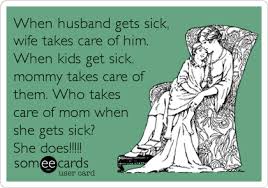My personal daily media usage is made up of a number of different sources. I spend time daily checking both work and personal email, accessing news through the online sites of several newspapers, sending and receiving phone calls and text messages, and utilizing social media through company webpages, Fusion (an internal company social media site), and Facebook. I also access SNHU learnings and content through the SNHU website and Blackboard.
Media reached me indirectly in many ways, including conversation with friends, family and coworkers, and through my company itself. The daily buzz of my phone alerting me to a new email or alert from some type of media brings me back into the media’s fold, even when I think I might have escaped for a moment or two. Media can affect the way I perceive world events in many ways. Whether or not the media themselves have bias (which they predominantly do, in my mind), they choose to focus on world news stories that have the “human interest” factor that drives the consumption of their particular product. In example, Baran, in his book Introduction to Mass Communication, points out how CNN had 50 people covering the aftermath of the March 2011 earthquake and tsunami, but assigned more than 400 to England’s royal wedding. (Baran, 2015) This fact in itself shows how the media lends itself to the stories that it believes its readership wants to hear. These choices, made by the media as a whole, lead to human consumption of what the media believe we want to hear.
In a very similar way, the media also chooses what we think about. If we’re unaware of some particular event, because the media has decided that its importance is lesser for any reason, means that we obviously won’t take the time to discuss it and find out what is truly happening. The media provide us with the fodder for thought in this way. They give us the stories, and we shape them how we wish. We also have a tendency to choose to view only the media that we philosophically or politically agree with. This is the reason those who watch Fox News don’t watch MSNBC, and vice versa. We want the media to prove our personally held beliefs correct. People love to hear that others believe the same way that they do, whether religious, political, social, or any other facet of who we are. The media has the ability to shape our beliefs in this way. By aligning us with others and showing us that we are not alone in thinking this way, the media can reinforce these beliefs.
However, this can work in the opposite manner as well. The mass media allows us to access many different beliefs and leanings that differ from our own. In this way, the media can help to teach us to become more globally accepting, by showing us those who may be different from us in some ways, but quite similar in others. It can provide for greater conversation and debate over existing social barriers, and give us the ability to learn more from others. This is only true if we allow the media to work for us as a collaborative force, instead of using it as a divisive one. In these ways, the media’s influence can be positive or negative on an individual, and most likely a combination of the two. It is through media literacy and true knowledge of media’s role in our society and others that we have the opportunity to shape our media to our particular values.
Kovach and Rosenstiel, in their book Blur, state that “through the history of civilization, there have been eight epochal transformations in communication that, in their way, were no less profound and transformative than what we are experiencing now; from cave drawings to oral language, the written word to the printing press, the telegraph to the radio, broadcast television to cable, and now the Internet” (Kovach & Rosenstiel, 2010). As we have progressed through these massive social and technological changes, we have drastically increased the amount of information that we have access to. Does access to massive amounts of information make us, as people, more knowledgeable? Perhaps or perhaps not. Perhaps we no longer need to learn and actually KNOW anything, as we can now search the Internet for information on any topic we desire. The question still remains, “how do we identify, with our new tools and options, what information is reliable?” (Kovach & Rosenstiel, 2010).
Baran, S.J. (2015) Introduction to mass communication: Media literacy and culture. (8th ed.). New York, NY: McGraw-Hill
Kovach, B. & Rosenstiel, T. (2010) Blur: how to know what’s true in the age of information overload. (1st ed.). Bloomsbury USA, New York














